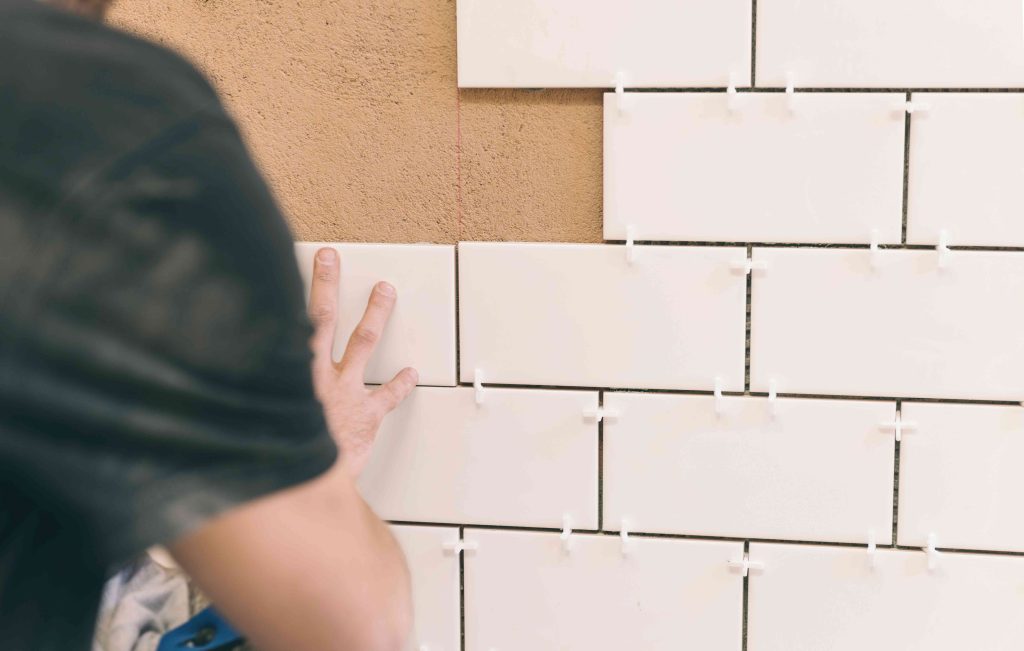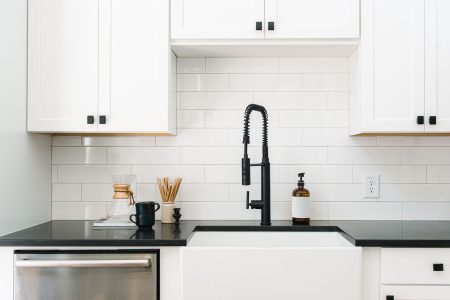Homeowners love to spend time looking through decorating magazines, watching the latest renovation series, and thinking of what they would do to upgrade their home if they had the time and money.
If you have planned for a dream update and then wished it had all been a bad dream, fret not! Professionals have a few ideas for how to get it right the first time, or fix it and make your home even better than you imagined.
1. Botched Paint Job
Sometimes a hue that looks heavenly at the paint store is more like ho-hum once you get it on the walls. If you do the job yourself, be sure to make a plan before you paint. Consider the lighting—both fixtures and natural exposure. A darker color in a room with little illumination makes the space seem smaller.
Planning should also include getting the right materials for the job, from brushes to primer to the best tape to keep splatters to a minimum. Also, consider your aptitude and patience before you get started.
“There is a lot of information to gather and understand before you tackle projects,” says Richard Epstein, a master plumber in New York City and member of The Spruce Home Improvement Review Board, who has done his fair share of home renovations. “If you don’t enjoy what you are doing, it isn’t going to come out good.”
How to Correct It
If you get the job done and don’t love the look, you can try a couple of things to fix it. Deane Biermeier, a St. Paul, Minn. contractor, and another member of the Review Board, says the most obvious method is to repaint. “However, if the new paint has a different sheen than the existing, use a primer that has been color-matched to the new paint,” he says.
“If it is simply a matter of a desired color being too overpowering for an entire room, consider leaving the old paint on one wall to act as an “accent wall.” Then simply repaint the remaining walls with a contrasting or complementary color.”
2. Replacing Tile in Kitchen or Bath
Looking to update your kitchen with a tile backsplash or replace old, dingy tiles in a bath? This is a job that can go south quickly, as it is tougher than it might first appear.
“You have to do the research,” Epstein says, “You can YouTube just about anything. A homeowner should do some research and put in the time so they can see the scope of the work first.”
Epstein says no matter what tile project you take on, there is a process. Once you select the type of tile you want to install, do what the pros do and lay it out. “Get out your pencil and measure and lay out the tile in the room so you know how to cut. Otherwise, you can end up with a sliver of tile on one side and a big piece on the other.”
And tearing out tile will usually mean you will need to replace at least some of the drywall underneath. Plumbing could also take a hit if you aren’t careful. That can be a big expense to fix, says Central Texas contractor Jim Cooke, owner of Steel Horse Constructors. His company was once called in to repair a renovation that went very wrong, to the tune of tens of thousands of dollars.
“A quarter of our business is DIYers who saw it on TV, so they feel like they can do it,” Cooke says. “They see a contractor go in and do a whole house in three days, and that just doesn’t happen.”
If you don’t want to try this work yourself and might not be in the market for a professional renovation at the time, you have options.
How to Correct It
“If you need to change the color of ceramic or porcelain tile, there are several products available which allow you to refinish, or reglaze your tile,” says Biermeier. “RustOleum makes a tub and tile refinishing kit that is available at any home store. This is also a good product for countertops.”
3. Updating Flooring
Removing aging carpet or old tile is a good way to make a big impact in your entire house. Wood-look laminate, for instance, can come together in a snap, but it takes patience and planning.
How to Correct It
Hate your existing laminate? Prep work is key to fixing a subpar flooring job. “In the case of laminate flooring; it is a “floating” floor system, which means that it’s not attached to the subfloor in any way,” says Biermeier. “The laminate flooring must be removed before a new flooring material is installed. Also, laminate flooring is sealed by a protective top layer which does not allow color change of any kind.”
“If the product is an engineered real-wood product or a hardwood floor, color changes are possible by sanding and re-staining.”
4. Updating Existing Cabinets
Scores of homeowners turn to cabinet refacing to freshen the look in their kitchen or baths. And many of them end up dissatisfied when all is said and done. The main reason for that, say the experts, is because people underestimate the labor.
“There is a lot of man-hours involved in refacing cabinets,” says Epstein, “and the more time you take, the better your project will come out. But there is a lot of labor involved in refacing wood cabinets yourself.”
How to Correct It
Options to fix a less-than-ideal outcome with cabinet updates include, of course, bringing in a pro, or tackling the process again, with a color or stain more suited to the dream you have in your head.
“Any commonly used, cabinet quality paints or stains can be removed with various stripping chemicals and some elbow grease,” says Biermeier. “If repainting, be sure to use primer to re-seal the surface and ensure an even (re)finish. If a stain will be used, be sure to use a wood conditioner before staining.”
5. Putting in a Pool
Having your own respite from the summer heat can sound like heaven. This upgrade is obviously not one you can do alone, but before you take the plunge, ask yourself why you want one and you might avoid regret down the line.
Atlanta Realtor Erin Coker suggests a reality check first. “The cost to install a pool exceeds the value it adds to your home, in most cases. They can be a huge liability, and some buyers may avoid homes with pools if they have small children or pets.”
If this is a feature you will use often, forge ahead but, as with any update or renovation, plan first. Besides the actual cost of installing the pool, you will have expenses for things like decking, a cover, chemicals, and ongoing electrical or gas costs for a heater.
Your pool will also require regular cleaning and maintenance to stay in ship shape. If you are doing the work yourself, that shaves some dollars off the overall package. If not, be prepared to spend $1,500 to $2,000 a year for a company to do the necessary maintenance.
No matter what changes you want to make to your home, nothing is permanent. Stick with the experts’ advice—do your research and make sure you either hire reputable professionals or really know how to DIY—and you will have zero renovation regrets.
Read the full article here









